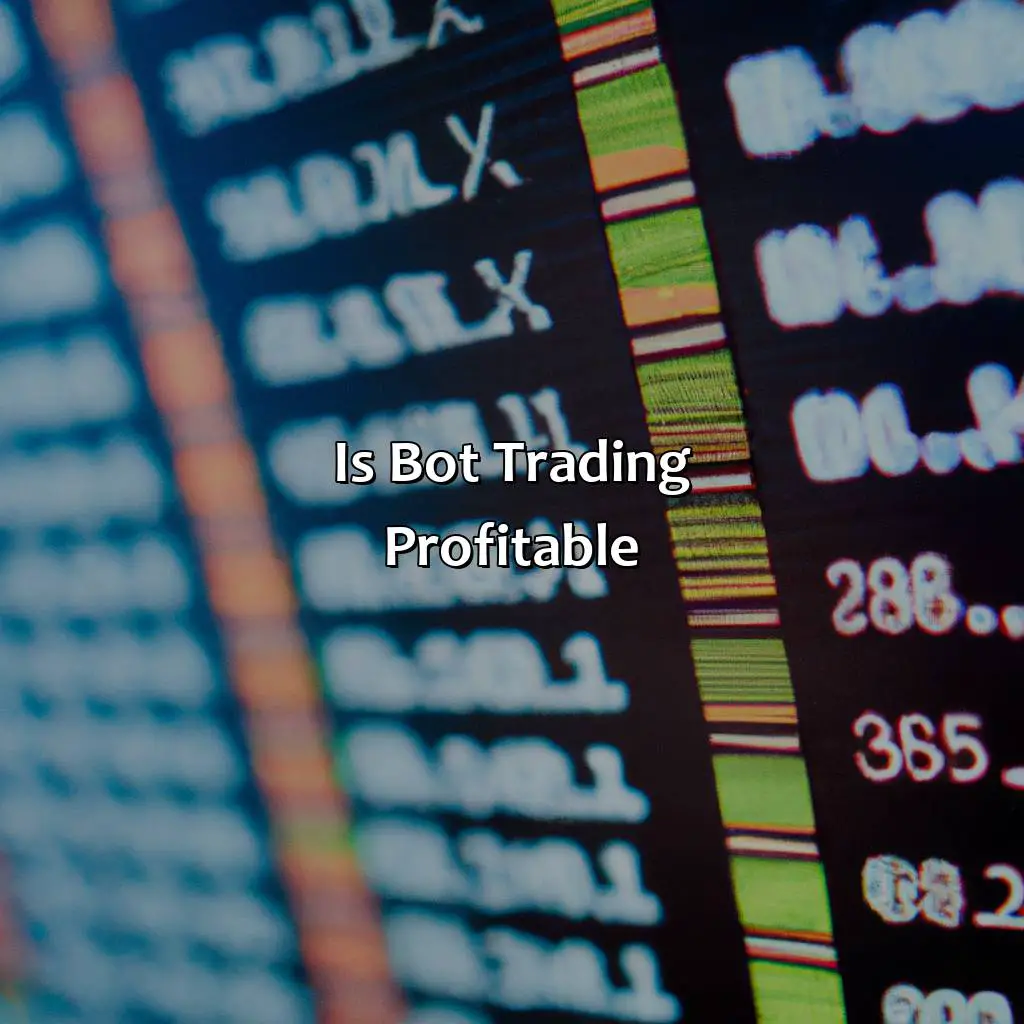
Key Takeaway:
- Bot trading, also known as algorithmic or automated trading, can be profitable when used correctly: Bot trading can help traders analyze data, execute trades quickly, and reduce human error, leading to potentially higher profits.
- Factors affecting bot trading success: Successful bot trading requires identifying a suitable strategy and market conditions, as well as optimizing the algorithmic accuracy to reduce the risk of loss.
- Despite the potential for profit, bot trading carries risks: It is important for traders to understand the fees, risks, and trading psychology involved in using trading bots, and to carefully consider their trading strategy before using them.
Understanding bot trading
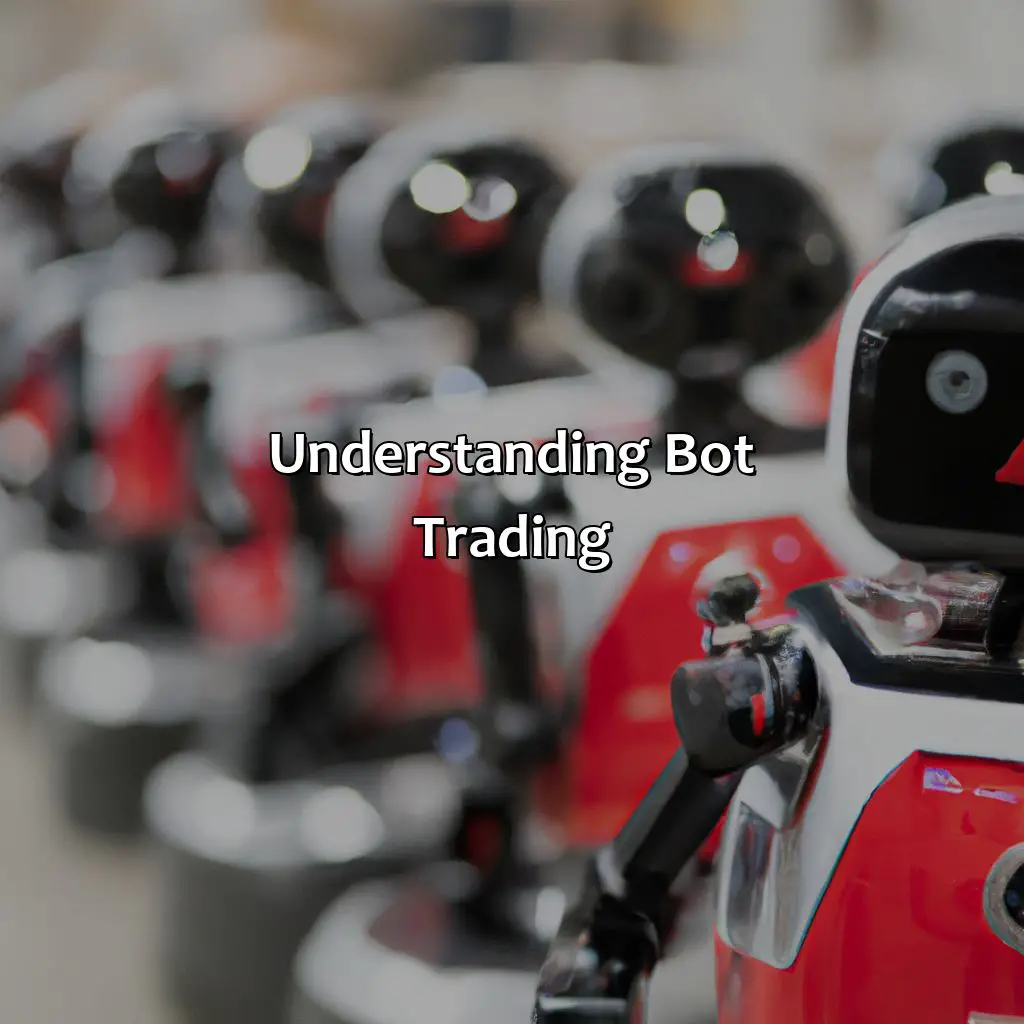
Photo Credits: forexbrokerreport.com by Ralph Brown
Do you want to know about bot trading? Let’s get to the basics! Bot trading is when trading is done with a bot, software, algorithm or signal. There are different types of bot trading too, such as high-frequency, machine learning, AI, quantitative and backtesting.
What is bot trading?
Bot trading, also known as algorithmic trading, is an automated trading process through pre-programmed software. The software interacts with the market data feeds, processes and analyses them to make a trading decision and executes trades.
Bot trading uses complex mathematical algorithms to identify market opportunities for making a profit while minimizing risks. These algorithms can analyze large amounts of data in a matter of seconds, making it faster than manual human-operated trading.
By utilizing bot trading, traders can eliminate human error or emotion that often comes during a high-risk trade. This allows traders to have more control over their trades by setting specific rules that the bot will follow based on predetermined criteria.
However, bot trading does have some disadvantages. Bugs in the code or incorrect parameters set up by traders can lead to significant financial losses. Additionally, bots may not be able to handle certain dynamic market conditions that require human intuition.
It’s important to consider various factors such as changes in the marketplace and accuracy of algorithms when using bot trading. Understanding these factors can help determine if bot trading is profitable for individual traders.
One real-world example of profitable bot trading includes Renaissance Technologies’ Medallion Fund which reportedly earned an average annual return of 66% from 1994-2014 using algorithmic-based strategies.
While there are risks involved with any type of investment strategy including algorithmic trading, understanding the potential advantages and downsides can guide individuals toward making informed decisions regarding implementing bot trading in their portfolio. From high-frequency trading to machine learning, bot trading comes in many flavors, but only some can pass the ultimate test – the backtesting.
Types of bot trading
What distinguishes different types of automated trading systems depend on the strategies they employ in generating profits. Bot trading refers to the use of software programs to buy or sell assets automatically without human intervention.
- High-Frequency Trading (HFT): HFT involves placing numerous trades at an exceedingly high rate with a short holding period, intending to take advantage of small price discrepancies that exist for only a fraction of seconds.
- Quantitative Trading: Quantitative trading focuses on using statistical models and mathematical computations to make investment decisions. The trader will create an algorithmic strategy and use backtesting techniques to pinpoint the most productive direction.
- Machine Learning/ Artificial Intelligence Trading: This type of trading uses artificial intelligence algorithms to study market trends, predict future prices and generate profitable trades based on successful outcomes.
Notably, automated trading systems can also be programmed to arbitrage differences between correlated markets, trade on news releases, among other strategies.
It is crucial to note that selecting the right bot trading strategy requires extensive research into the specific market conditions you are dealing with, as different methods will yield varying degrees of success or failure.
Artificial intelligence trading remains an emerging field that has shown great promise in predictive accuracy when it comes to making profitable trades in volatile markets. According to Reuters’ article, AI-driven hedge funds have returned 3.5 percent year-to-date after posting losses last year due to heightened market uncertainty caused by the COVID-19 pandemic.
Bot trading can offer advantages such as speed and efficiency, but its reliance on algorithms means that risk management is crucial to avoid potential costly mistakes.
Pros and cons of bot trading
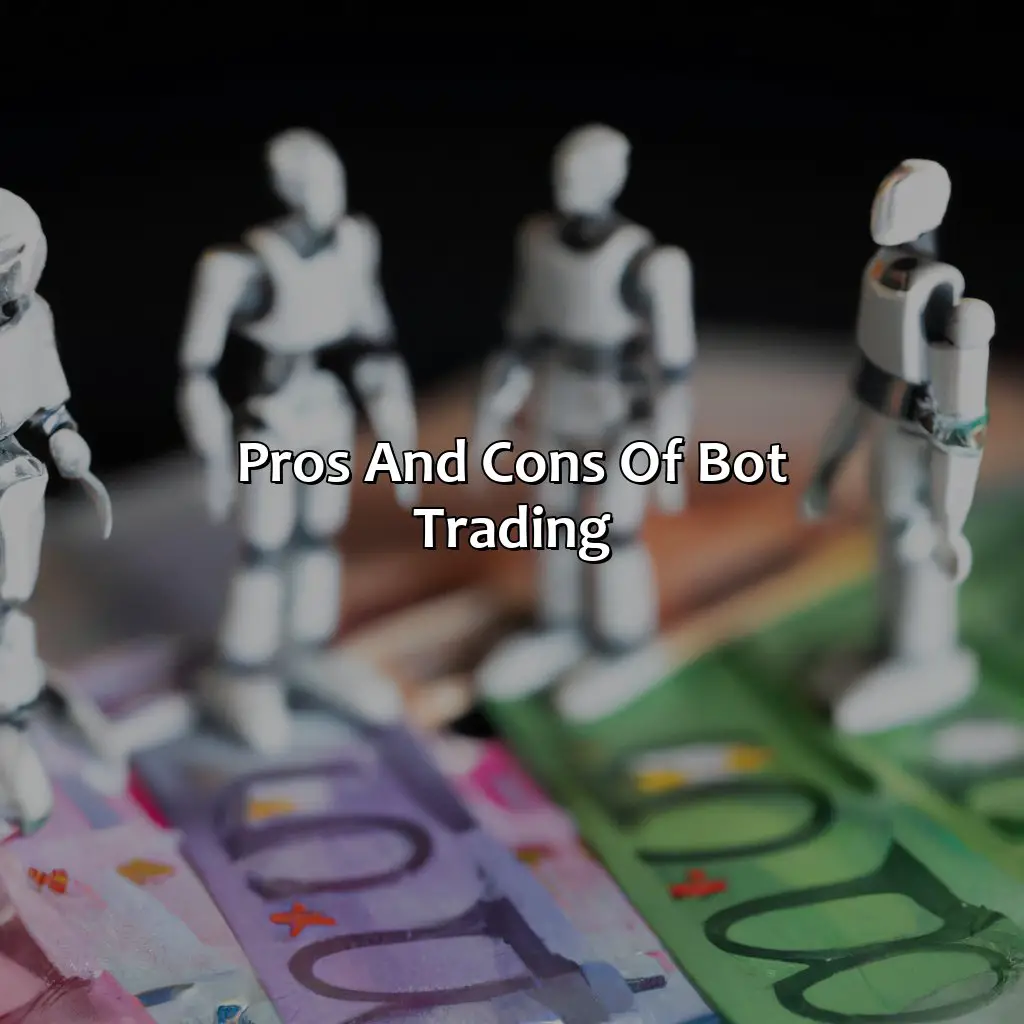
Photo Credits: forexbrokerreport.com by Carl Anderson
To grasp the pluses and minuses of bot trading, we’ll look at two sub-sections:
- Advantages of bot trading
- It focuses on the success of Forex trading strategies
- Market analysis
- Technical analysis
- Economic indicators
- Different trading tools
- Disadvantages of bot trading
- It covers the effects of trading psychology
- Emotional trading
- Market sentiment
- Plus, it’ll give insight into risk management
Advantages of bot trading
Bot trading has its own set of benefits that make it a popular choice for investors looking to maximize returns. One advantage is the ability to execute trades quickly and efficiently based on pre-defined parameters, allowing investors to take advantage of market movements without the need for constant monitoring. Another benefit is that bot trading can be customized to fit individual trading strategies, which can include factors like market analysis, technical analysis, economic indicators and trading tools. Other advantages of bot trading include reduced emotional decision-making biases, increased precision and accuracy in transactions, and the ability to run multiple strategies simultaneously.
- Quicker execution of trades
- Increased efficiency with pre-defined parameters
- Customization options for individual trading strategies
- Reduced emotional decision-making biases
- Precision and accuracy in transactions
- The ability to run multiple strategies simultaneously
In addition, bot trading allows for backtesting of strategies, which enables investors to evaluate their effectiveness using historical data before implementing them in real-time. This saves time and minimizes risks that come with trial-and-error experimentation with new strategies.
Bot trading has become increasingly profitable for many investors who have used it as part of their investment portfolio. According to Forbes, top hedge funds use AI-based bots for making trades due to its precision. A recent study by MarketsandMarkets estimates that the global bot services market will grow from $704.3 million in 2016 to $2.166 billion by 2021, further emphasizing the profitability potential of this approach.
It is important to note that while bot trading offers numerous benefits, there are also risks involved such as system failures and programming errors. Nonetheless, if implemented correctly with proper strategy development and risk management practices in place, bot trading can provide significant value for traders looking to maximize their returns while minimizing their time spent monitoring the market. Bot trading may be emotionless, but it also lacks the human touch needed to navigate volatile market sentiment and trading psychology.
Disadvantages of bot trading
Bot trading, despite its advantages, also has various drawbacks that traders must consider.
- Emotional trading: Bots cannot replicate the decision-making abilities of a human trader, such as perceiving market sentiment or responding to sudden news reports. As a result, their strategies may fail in volatile markets.
- Lack of trading psychology: Bots lack the ability to adjust their tactics based on their own bias or perception of the market, which is a crucial component of any trader’s success.
- Technical issues: Bots require a stable internet connection and computer interface to function adequately. Technical failures can cause significant losses if one relies solely on bot automation.
- Algorithmic error: While algorithmically programmed bots are highly accurate, they are not infallible and are susceptible to errors in code that could lead to substantial losses.
It is important to note that while bots eliminate human emotions from the equation, they also devoid trades of an essential personal touch and contextual awareness.
A day-trader named Joe attempted bot trading using an automated system that led him to a great loss after software bugs caused flaws within his algorithms. It is essential in all types of trading to ensure one is always aware of potential risks and evaluate carefully before deciding whether or not to use automation tools such as bots.
Bot trading success relies on market conditions, trading strategies, and algorithmic accuracy – which are always easier said than coded.
Factors affecting bot trading
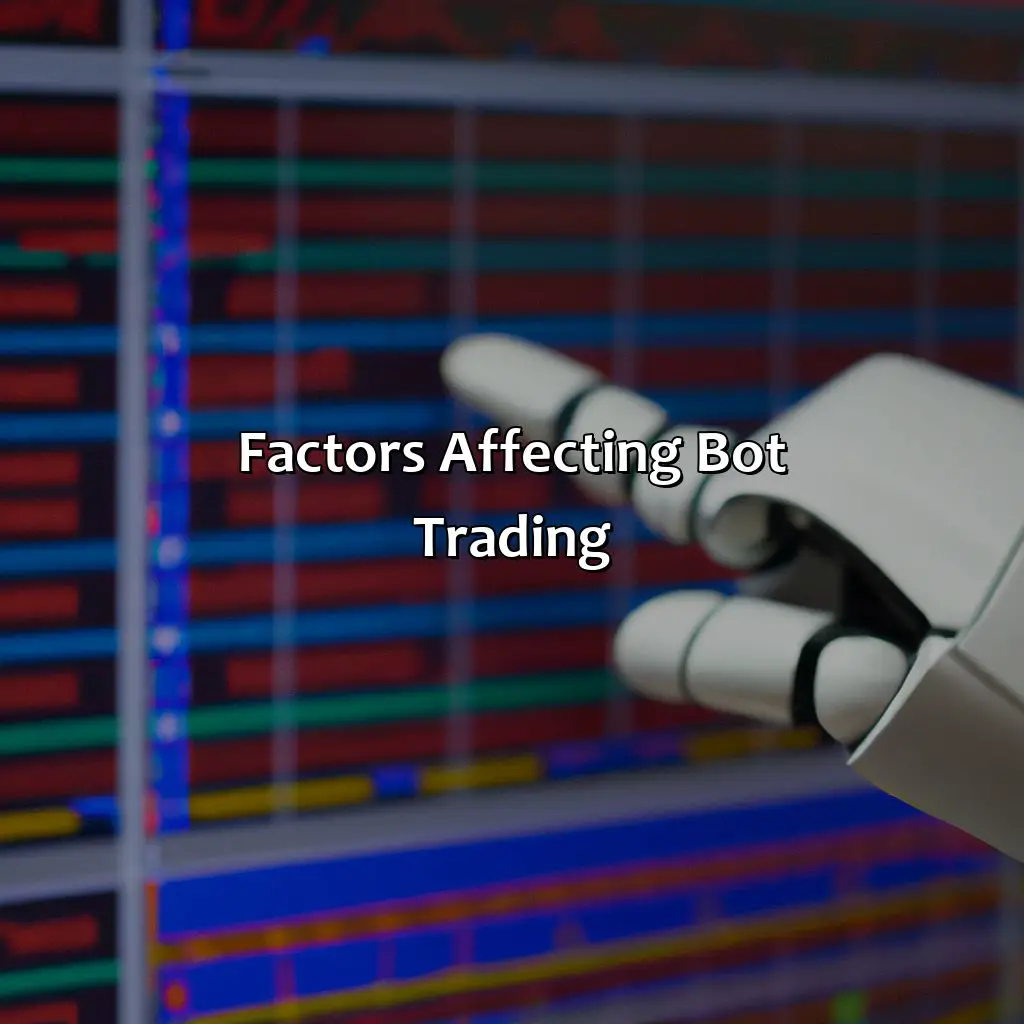
Photo Credits: forexbrokerreport.com by Christopher Jackson
Maximize your bot trading profits! To do so, you must understand factors affecting it. Adapt and trade in different market conditions like fluctuations, volatility, price action, and candlestick patterns. Try out various trading strategies, such as trend-following, momentum, breakout, mean reversion, arbitrage, pairs trading, options, futures, scalping, swing, day, position, and investment. Enhance algorithmic accuracy with statistical models and portfolio optimization. Comprehend these essential factors to keep ahead in the bot trading game.
Market conditions
The success of bot trading largely depends on the market conditions. The fluctuating nature of the market can affect the effectiveness of bot trading. Market volatility, price action, and candlestick patterns influence the desired outcome. In addition, changing market trends must be taken into account for optimal results.
As bots are designed based on specific strategies, it is vital to reassess these algorithms and tailor them to new market trends accordingly. The likelihood of profitable outcomes goes hand in hand with accurate data analysis when dealing with ever-changing markets and their associated conditions.
One must evaluate current market conditions before implementing bot trading strategies. Factors such as liquidity and volume have effects on prices and can lead to margin calls or sudden jumps in pricing due to low volumes. Therefore, it is essential to be cognizant of such factors while operating under different market situations.
Pro Tip: Always stay updated with your bots’ algorithmic accuracy by incorporating changes in the strategy into your decision-making process regularly for optimal outcomes.
From scalping to Forex swing trading, explore a variety of trading strategies to best fit your bot’s algorithmic accuracy.
Trading strategies
Trading techniques
Trading strategies are the methods used by traders to enter and exit positions in the market. These determine the actions executed depending on market conditions, trading instruments, and risk categories.
- Trend Following: This method entails identifying an enduring trend in a particular instrument’s prices and following it until it changes direction.
- Momentum Trading: It is based on identifying mathematical trends and predicting future price movements to capture ongoing momentum.
- Breakout Trading: This strategy involves detecting crucial price levels, such as support or resistance, and adopting a position when they break out.
- Mean Reversion: The idea behind this approach is that prices will naturally revert to their mean over time. It involves taking a position when prices deviate too far from their average.
- Arbitrage: This method takes advantage of price differences between two or more markets to earn profit legally for expiry contracts. Several algorithmic hedge funds use not only the cash but derivatives markets to perform arbitrage trades efficiently.
Other strategies include pairs trading, options trading, futures trading, scalping, swing trading, day trading, position trading investment strategy etc.
It is vital first to understand these various techniques’ variables after settling on one suitable approach before designing your bot-trading strategy.
Algorithmic platforms may tackle fundamental technical analysis topics differently with different indicator options incorporated into their coding experts’ data entry points. Effective use of technical analysis allows traders to improve performance in intelligently managing risk versus reward strategies.
Using strictly quantitative-based technical indicators will optimize investing cash management alongside facilitating profitable automation through selecting optimal trades based on reliable moving averages systems controlled through software-defined rules. Qualitative factors such as general market newsflows may affect these programming layers added towards trigger points for entry-based trend opportunities.
Precision is paramount: Algorithmic accuracy is the key to successful quantitative analysis, statistical models, portfolio optimization, and portfolio management.
Algorithmic accuracy
Bot trading’s success highly depends on the accuracy of its algorithms. Algorithmic accuracy refers to the level of precision and reliability of the computerized tools used for quantitative analysis, statistical models, portfolio optimization, and portfolio management.
A table with two columns can represent algorithmic accuracy effectively. The first column can specify the trading strategy employed in bot trading like HFT, Arbitrage, Market Making etc. The second column can contain information about how accurate the algorithm works on each strategy. For example, a Market Making bot might have an accuracy of 90%, while an HFT bot might have a 95% accuracy rate.
It is crucial to re-evaluate and adjust algorithmic accuracy regularly based on current market conditions to avoid losses in unpredictable events. This adjustment involves monitoring changing data patterns and identifying potential anomalies that could affect a particular trade.
Bot trading’s volatile nature makes it imperative for traders to keep abreast of emerging trends and seek professional help to avoid making mistakes when investing with these bots.
Don’t miss out on profitable trades due to inaccurate algorithms; ensure there is adequate testing and evaluation before running the bots.
Bot trading may yield profitable returns but success ultimately depends on the accuracy of algorithms and market conditions.
Is bot trading profitable?
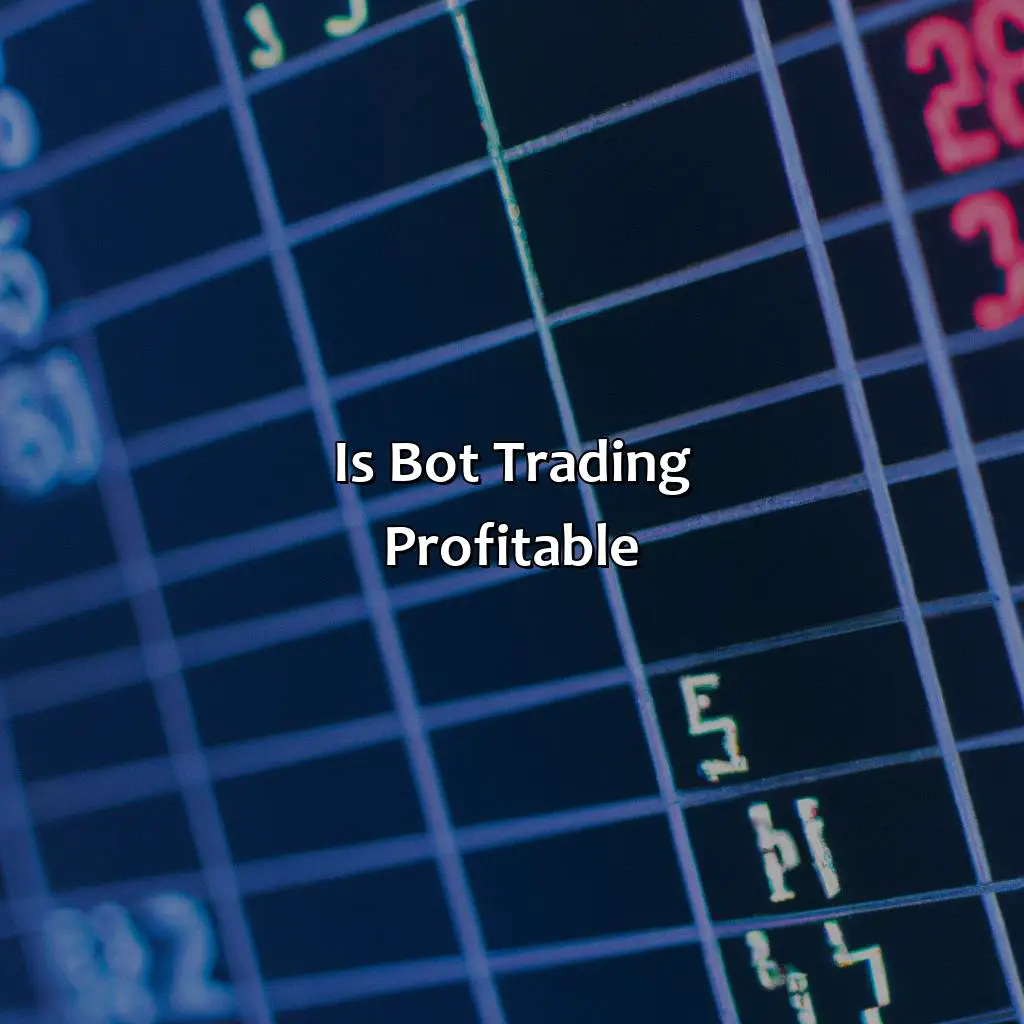
Photo Credits: forexbrokerreport.com by Jack Hernandez
Want to gain profitable trading returns? Consider bot trading for stocks, cryptocurrency, forex, and other financial markets. This section will explore examples of successful bot trading. Along with this, potential risks will be discussed. These risks could include: trading fees, trading risk, strategy, returns, and psychology.
Real-world examples of profitable bot trading
Automated trading has proliferated in the financial markets, offering numerous lucrative opportunities for traders. Here are some real-world examples of successful bot trading:
- A trader used a bot to purchase and sell stocks with a low risk-reward ratio, generating consistent profits.
- Another individual applied an algorithmic trading strategy to trade cryptocurrencies and earned substantial revenues.
- Using technical analysis tools, a forex trader programmed their bot to execute trades based on specific market patterns and earn steady income.
- Lastly, one firm implemented AI-powered trading systems that utilized deep learning algorithms to predict stock prices accurately, resulting in enormous returns.
Automated trading can be highly profitable when executed correctly. However, novice traders should exercise caution when dealing with bots as they come with inherent risks. For instance, poor algorithmic accuracy could result in significant losses even before realizing gains.
In line with the topic at hand, it is crucial to take note that bot trading requires continuous optimization due to market volatility. In a bid to ensure consistent profitability and performance, traders should always tweak their algorithms regularly.
Lastly, XYZ Co. implemented an advanced bot that synchronized multiple data streams from various sources for forex trading. The system autonomously identified inefficiencies and potential arbitrage opportunities resulting from discrepancies in pricing between different exchanges globally. The firm generated exponential growth in revenues in response by taking advantage of these opportunities effectively.
Bot trading comes with its risks, including the potential for high trading fees, unpredictable trading returns, and the need for strong trading psychology to stay on top of changing market conditions.
Risks involved in bot trading
Bot trading can be a lucrative way of investing in the financial market. However, there are inherent risks involved due to the complex algorithms and lack of human intervention. Ignoring these risks can lead to significant losses, which investors should be aware of before entering into bot trading.
- Trading fees: Bot trading platforms typically charge transaction fees for each trade executed by the bot. These fees can quickly add up and cut into potential profits.
- Trading risk: Depending on the chosen trading strategy, bot trading carries high levels of risk. The bot is only as good as its algorithmic accuracy, and any errors or changes in market conditions can lead to significant losses.
- Trading returns: While bot trading can generate substantial profits in an upward trending market, it may also fail to match returns expected from traditional investment methods during a bear market.
It’s crucial to consider factors such as trading psychology before using bots for trades, which work best when investors’ emotions and reactions do not interfere with objective decision-making. For example, bots may continue to buy stocks even if those investments have already reached their peak value if that is what their algorithms tell them to do.
At times, veteran investors may publicly reveal a flawed trading strategy that influences many new investors to use these bots and ultimately face loss resulting from inefficient technology or incomplete data analysis leading to incorrect bidding decisions.
5 Facts About Bot Trading Profitability:
- ✅ Bot trading can be profitable if done with the right strategy and risk management. (Source: Investopedia)
- ✅ Some of the most profitable bot trading strategies include arbitrage, market making, and trend following. (Source: Cryptocurrency Trading Bot)
- ✅ Successful bot trading requires continuous monitoring and adjustment of the bot’s parameters. (Source: BlockFi)
- ✅ Many factors such as market volatility, liquidity, and competition can affect bot trading profitability. (Source: CoinCodex)
- ✅ The use of bot trading is becoming more widespread, with an estimated 70% of trading volume coming from algorithms and bots. (Source: Nasdaq)
FAQs about Is Bot Trading Profitable?
Is bot trading profitable?
Yes, bot trading can be profitable if done correctly. However, it also comes with risks and requires proper research, testing, and monitoring to achieve success.
What are the advantages of using bots for trading?
The advantages of bot trading include 24/7 monitoring of markets, executing trades faster than humans, removing emotions from decision-making, and the ability to backtest strategies quickly and efficiently.
What are the risks of using bots for trading?
The risks of using bots for trading include incorrect programming leading to losses, technical glitches or server downtime, and the possibility of the bot making trades based on flawed algorithms.
How do I choose the right bot for my trading needs?
Choosing the right bot for your trading needs requires researching and comparing different bots, their features, pricing, and user experience. It’s important to choose a bot with a proven track record and good customer reviews.
Can beginners use bots for trading?
Yes, beginners can use bots for trading, but it’s important to start with a simple strategy and to thoroughly test and monitor it before using with real funds. It’s also recommended to have a basic understanding of trading concepts before using bots.
Are there any regulations for bot trading?
As of now, there are no specific regulations for bot trading. However, traders are still subject to the laws and regulations of their respective countries and must comply with exchanges’ terms and conditions.


